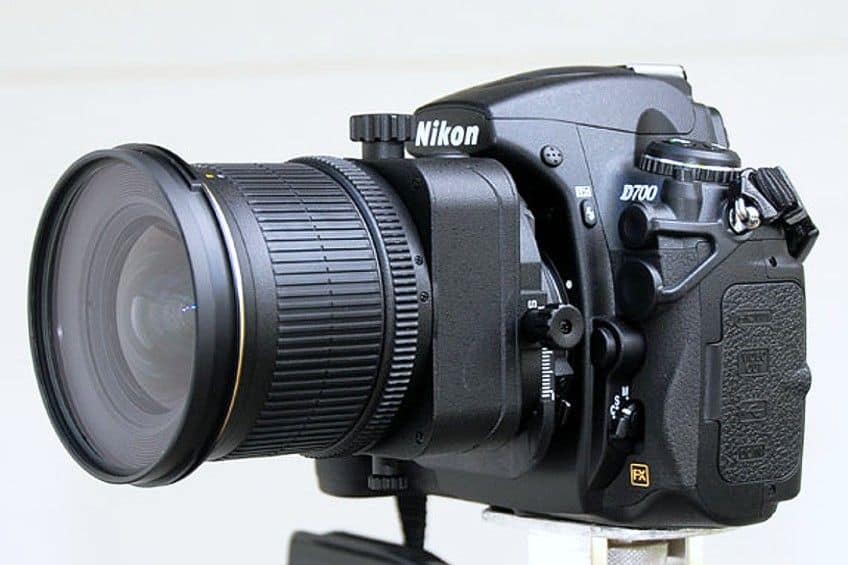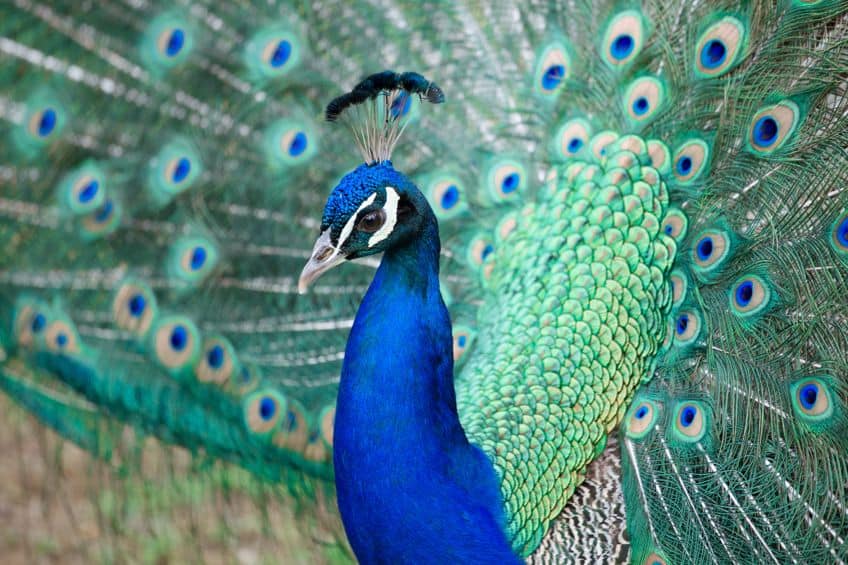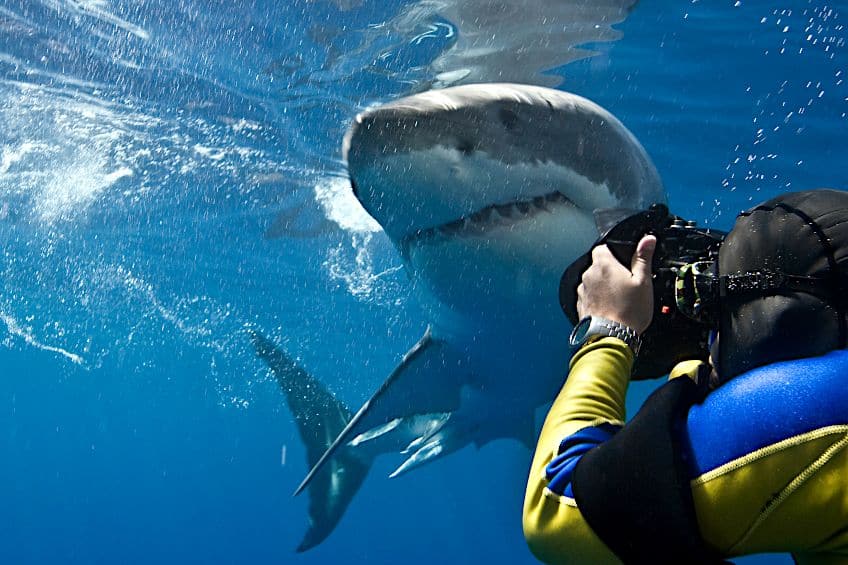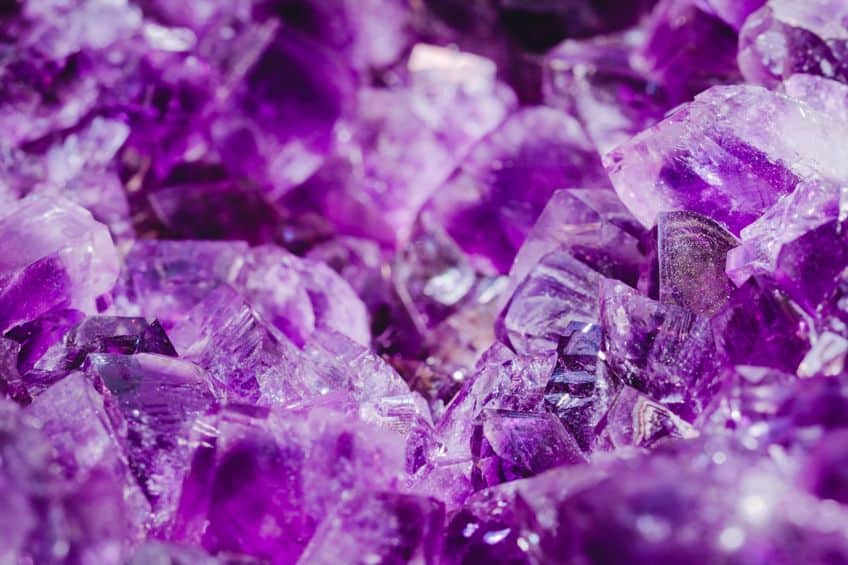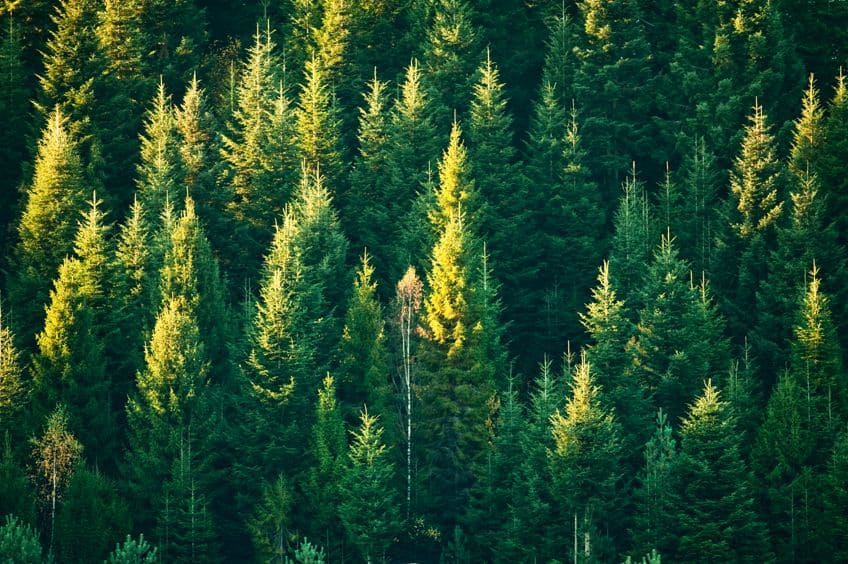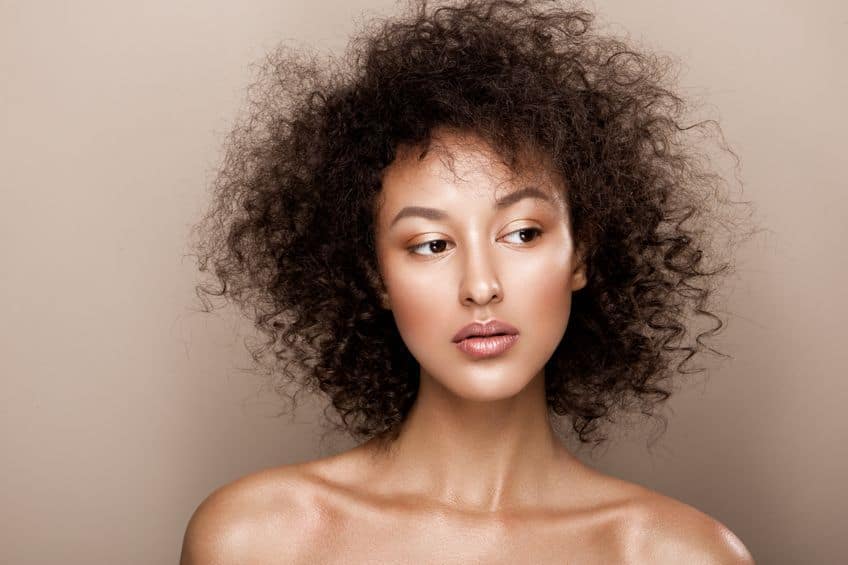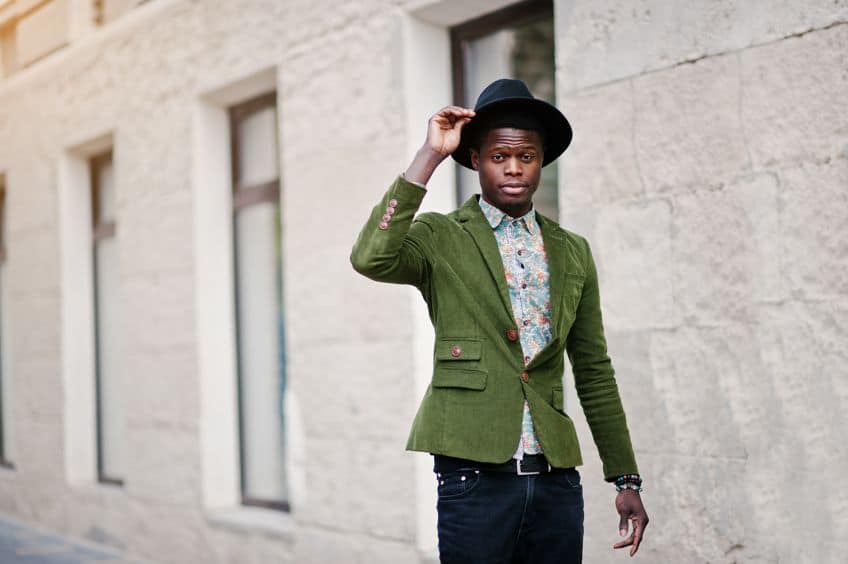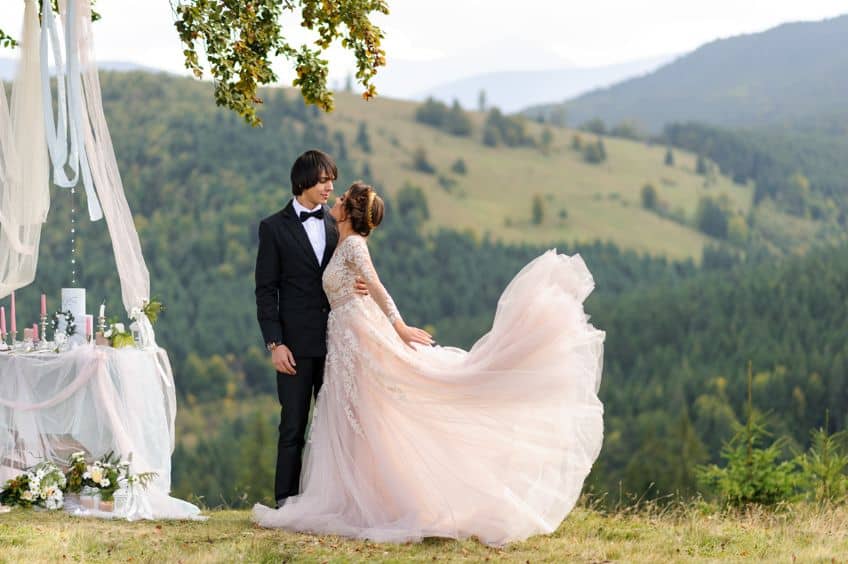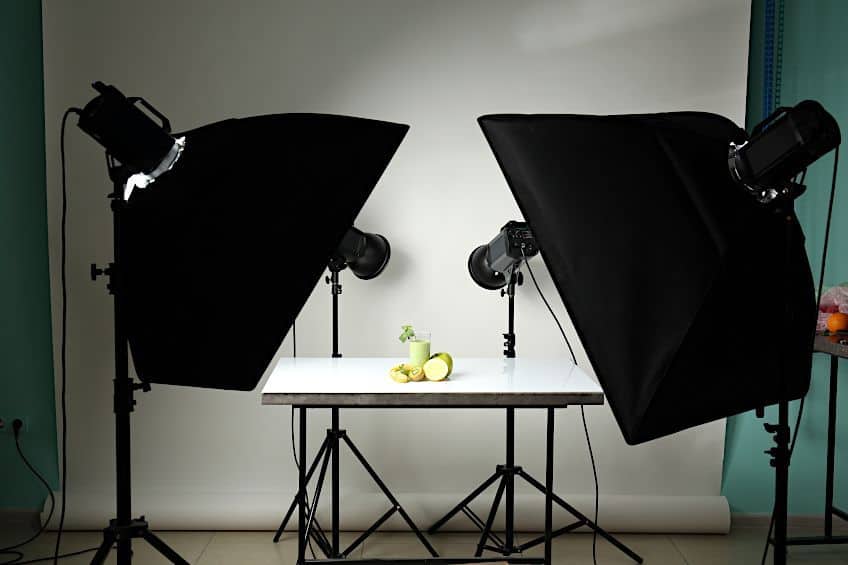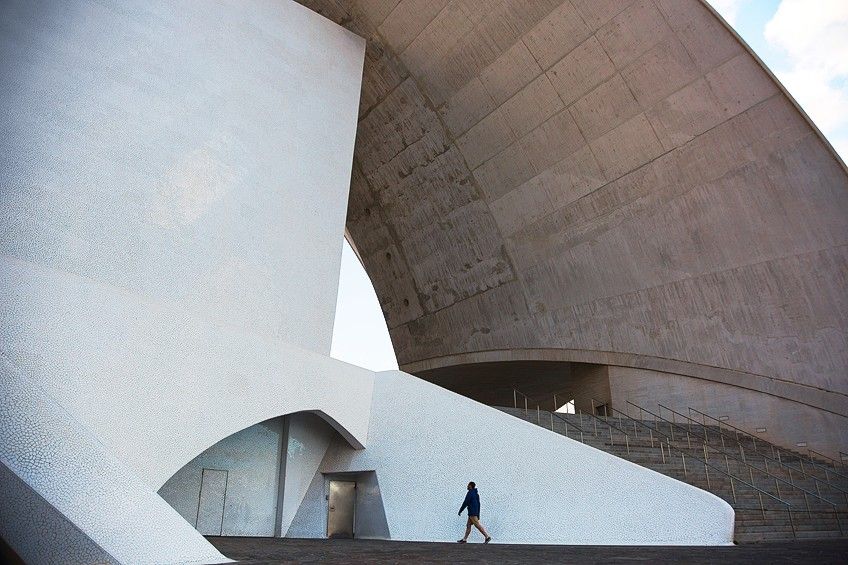Types of Photography – Unique Ways to Capture the World
Photography is a flexible medium that enables artists to manipulate images in a multitude of ways to create new visual languages. Photography allows artists to explore different subjects and relay concepts and themes in ways that would otherwise not be as effective in any other medium. In this article, we will explore the 20 most important types of photography that artists use, as well as how to identify each photography style. Read on for more about the diverse medium of photography!
Contents
Exploring the Different Types of Photography
Since the 19th century, photography and the development of advanced technology have resulted in many tools and photographic equipment that drove the generation of multiple genres of photography. In photography, variety is rife and one can encounter numerous photography styles across multiple industries, including entertainment, fashion, marketing, advertising, and product development. The different photography styles discussed below showcase how diverse and flexible the medium is while emphasizing its functionality in almost all aspects of life. Below, we will dive into the different types of photography as understood in three segments: nature, people, and manmade objects.
Photographing Nature
Photography is primarily used when documenting natural forms and phenomena in nature. Artists around the world combine their passion for nature or environmental conservation to advocate for important environmental issues and climate change-related disasters.
Below, we will revise some of the most important genres of photography as it pertains to nature.
Nature Documentary Photography
What is nature documentary photography? Nature documentary photography is one of the most well-known genres of photography as it concerns nature since it involves the photography of elements from the natural environment to campaign for a specific cause. This type of photography extends beyond capturing a stunning high-resolution image of wildlife or a landscape and is aimed at highlighting the importance of conservation and preservation.
One can identify nature documentary photography by looking out for its key characteristics. These include the element of storytelling, which is used to draw attention to a particular aspect of the natural environment. Storytelling can appear when the images in a series capture moments that reveal information about the struggle of animals, the impact or magnanimity of natural phenomena, or plant and animal interactions. You can also look out for simple cues such as the presence of an environmental context, informative captions, a photojournalistic style, and evidence of an ethical approach.
Popular subjects in nature documentary photography include pollution, climate change, habitat destruction, and the impact of human activity on the environment.
Most nature documentary photographers aim to promote the welfare of nature and adhere to ethical guidelines to ensure that they do not harm the subjects they capture. Informative captions are frequent in nature documentary photography and provide more context about the subject. These captions are usually meant to educate the viewer and inspire empathy, action, and concern. Nature documentary photographers employ techniques such as the use of decisive moments, natural lighting, and candid shots that resemble a photojournalistic approach.
Astrophotography
Astrophotography is perhaps the most stunning type of photography. Astrophotography is an important genre of photography that focuses on the photography of celestial and astronomical phenomena. Astrophotography involves capturing images of stars, galaxies, planets, nebulae, and other astronomical subjects. These images are often highly detailed and showcase the grandeur and beauty of the night sky while making use of specialized photographic techniques and equipment. Astrophotographers use long-exposure techniques to capture images of star trails and other natural phenomena of the universe. One can identify astrophotographs by looking out for elements such as celestial objects, images shot in low-light settings, and objects that would require a telescope and high ISO-equipped cameras to view in real-time.
Wildlife Photography
Similar to nature documentary photography is the genre of wildlife photography, which can also be used to advocate for environmental causes, but focuses more on the photography of wildlife, their behavior, and their interactions within their natural context. The purpose of wildlife photography is to capture animals in a way that accentuates their natural form and evokes a sense of appreciation for the diversity of wildlife. Wildlife photography is an essential type of photography that is paired with research, patience, and a keen eye, which are all useful to identify and study different animal species.
Individuals can spot a wildlife image from various cues, with a few similar characteristics to that of nature documentary photography.
Wildlife photography emphasizes the animal as the main subject and captures their interactions within their set contexts. These images can feature animals, both large and tiny, from elephants to insects. Most images in this genre strive towards an accurate and authentic depiction of nature and are therefore not staged in any way. Photographers who specialize in wildlife photography have a thorough understanding of camera functions and exercise patience and strategy when capturing live and unpredictable subjects. Telephoto lenses are among the most popular choices for lenses in wildlife photography. Additionally, wildlife photographers follow similar rules when it comes to the ethics of photographing in wildlife habitats and the advocacy for environmental conservation.
Underwater Photography
The genre of underwater photography is easily recognizable. This type of photography is a highly specialized practice whereby a photographer captures images of scenes, objects, and sea animals under the ocean or within a body of water. Underwater photography is an important form of nature photography that draws attention to the underwater world that is often neglected or forgotten since many people cannot access or view the state of the ocean. Underwater photography is key to the advocacy efforts of ocean and marine life conservationists since it provides people with visual information on the state and occupation of marine life, the diversity of numerous sea ecosystems, and unique perspectives of the mysteries behind some of the most intriguing underwater events.
Some of the key visual characteristics that one can use to spot an underwater photograph include subjects that appear submerged underwater and feature marine life within an aquatic environment.
Popular marine life captured in underwater photography includes turtles, fish, sharks, shipwrecks, dolphins, coral reefs, and underwater landscapes. Photographing images in water is challenging and therefore photographers adapt their equipment to suit the conditions of the water. Specialized camera housings and specific lighting systems are employed in professional underwater photography to improve the water clarity and rendering of the subject’s color and clarity. Equipment such as strobe lighting, waterproof cameras, and lenses are used in addition to the photographers themselves who need to be skilled divers to capture subjects of all kinds. Underwater photographs also showcase remote and undiscovered locations under the sea that feature new species of marine life and underwater landscapes. In underwater photographs, there is often a sense of adventure and exploration.
Macro Photography
Macro photography is a genre of photography that relies on the magnification of subjects in the photographic process. This form of photography is employed in nature photography to highlight aspects and details of the macro environment and can include tiny details of flowers, plants, insects, and other natural wonders that are unobservable in detail to the human eye. This is perhaps the most fascinating genre of photography that brings to light the numerous fine details of things we take for granted in nature. The techniques and equipment employed in macro photography as it pertains to nature are also used in food photography and advertising to build appeal for a product.
Ways that individuals can identify a macro image by recognizing that the image reveals details on textures, patterns, and intricacies that are at first unrecognizable.
This is because special equipment and lenses used in macro photography enable photographers to leverage a high degree of magnification on subjects. Other visual cues include a close-up or subject shot close to the camera. Photographers may be within a few centimeters of the subject’s vicinity to capture the desired close-up shot or angle. These types of images are often shot in high clarity and focus with a narrow depth of field. Photographers specializing in macro photography also employ a wide aperture to isolate their subjects from the background and create a soft blurred effect in the background. The subject will also occupy a large portion of the frame in macro photography. The beauty of macro photography as it is used in nature is that it captures the complex details of the natural world that provide unique views of the minute details of the environment.
Travel Photography
Travel photography is a widely practiced genre of photography that has a specific set of characteristics when it comes to capturing images of nature from around the world or well-known locations. Travel photography in nature can encompass other types of nature photography such as wildlife and landscape photography but focuses on the documentation of natural wonders and landmarks within nature. Among the key characteristics used to identify travel photography in nature includes the presence of a location-centric landscape, attraction, or well-known landmark that is set in a natural environment.
These images are perceived as scenic and include images of grandiose landscapes showcasing mountain ranges, forests, and deserts.
Such images inspire a sense of awe and admiration for the vastness of the Earth and the elusiveness of remote locations that go unseen and untouched by human activity. Travel photography also features elements of the cultures and societies that occupy the natural landscape and relay a sense of harmony with the environment. Some of the identifiable features in travel photography include the discovery of new natural spaces, the beauty of a particular location, scenic landmarks in nature, and images that inspire adventure, convey a narrative, and inspire wanderlust.
Landscape Photography
One of the most popular forms of nature photography is landscape photography, which is used to portray images of the outdoor natural world that emphasize the beauty of natural landforms. These images feature coastlines, forests, valleys, and rocky mountains that may appear scenic or moody. Landscape images are often visually atmospheric and include a sunset or sunrise in the background to enhance the image or draw attention to cloud formations, shadows, and other dramatic elements.
Landscape photographs rely on perspective and composition techniques that include different framing elements, stimulating interest in the foreground, and using leading lines to create compelling compositions.
Visual cues that one can use to identify a landscape image are by noting if an image focuses on changing weather conditions or seasons. Elements of snow, rain, sunshine, and wind are important cues in recognizing a landscape image. Natural elements like waterfalls, rocks, and geological phenomena may also feature in landscape art. Popular themes in this type of photograph include harmony, fragility, beauty, connection, and diversity.
Photographing People
As with nature and living creatures, photographers are always cautious with the ethics of photography, which also apply to people. Since the invention of the medium, artists, professionals, scientists, and hobbyists have been photographing themselves and others in a diverse range of categories for different purposes.
Below, we will review the most popular forms of people photography that each carry its unique visual function in Contemporary society.
Portrait Photography
Portrait photography is by far the most famous genre of photography that emerged after the genre of portrait painting. Portrait photography is centered on the photography of an individual or group of people such that the image captures the essence of the individual. These types of photographs capture close-up or bust sections of the individual’s face and their unique expressions. Portrait photographers plan their shoots in studio and outdoor settings and make use of a variety of photographic tools and equipment to create impactful portraits.
A portrait can be identified by the presence of an individual, executed traditionally or unconventionally through abstract representations, and alludes to the character or personality of an individual. Portrait photographs also display a close-up composition where an individual occupies the majority of the frame and is the primary focus of the image. These images are rendered in high resolution and show parts of the individual’s body, facial expression, and noticeable features such as eyes, mouth, and features that convey mood.
Portrait images are intentionally posed and techniques such as the Rule of Thirds, symmetry, and leading lines play a role in establishing a visual balance.
Fashion Photography
Another important form of people photography is fashion photography, which is aimed at exhibiting the stylistic and fashionable choices and expressions of individuals or fashion companies. This type of photography can include conceptual photography that makes use of creative techniques and unconventional methods to shoot images that inspire people and showcase clothing, accessories, and the features of models. These images can be controlled or shot candidly and often feature in advertising campaigns, editorials, and fashion magazines. Important features to look out for when identifying fashion photographs is to recognize if the images have a strong sense of storytelling and an emphasis on a particular style of clothing or fashion product.
Examine if the image draws attention to details such as texture or unique designs that highlight a specific trend. Fashion photography is used to convey specific narratives about the products they advertise to appeal to a particular audience. Specific poses and expressions by the models in the image may also accentuate the clothing and portray a specific mood. Look for cues related to body language and poses as well as makeup or accessories that complement the color palette and concept. These types of photographs can also be shot in a variety of locations, and sometimes location is key to determining the theme.
Fashion photography is often shot in very high quality, which means that there is a lot of attention paid to refined editing, lighting, and post-processing methods that make the image seem polished, even if shot outdoors.
Street Photography
The art of street photography can also be combined with fashion photography in both a staged and candid manner. Street photography differs in that these photographers focus on the unstaged documentation of life in urban environments. Street photography captures the raw interactions of people in their unscripted realities to showcase the diverse nature of individuals and their emotions as they are unaware of being photographed. Ways that one can identify a street photograph by looking for cues that show a spontaneous moment or an image that appears to be shot candidly. These types of images are unposed and feature authentic expressions and a sense of immediacy.
Elements of urban life or landscapes also feature in street photography so look out for backgrounds with street signs, graffiti, buildings, public squares, and architecture. When it comes to photographing people in urban settings, street photographers focus on human interaction and shoot images that show people’s gestures to highlight peculiar expressions and events that occur in urban environments that are often the source of overstimulation. Street photographers rely on the decisive moment to capture a sense of time and add interest to the narrative of their shoot.
Lastly, elements of storytelling and social commentary are rife in street photography, whether that is through fashion photography or imagery of human experiences related to the human condition and social issues, street photography is centered on the impact of such issues and human life in built environments.
Documentary Photography
Documentary photography is another form of photography that involves the narration of particular stories about human issues. Documentary photography can relay messages about real-life events as it pertains to cultures, societies, and groups of people. A wide range of themes can be covered in documentary photography, which often privileges authenticity and objectivity in the role of the photographer. These types of photographs are aimed at evoking emotions, and raising awareness, and can be a form of photojournalism in the documentation of cultural and social spaces and issues.
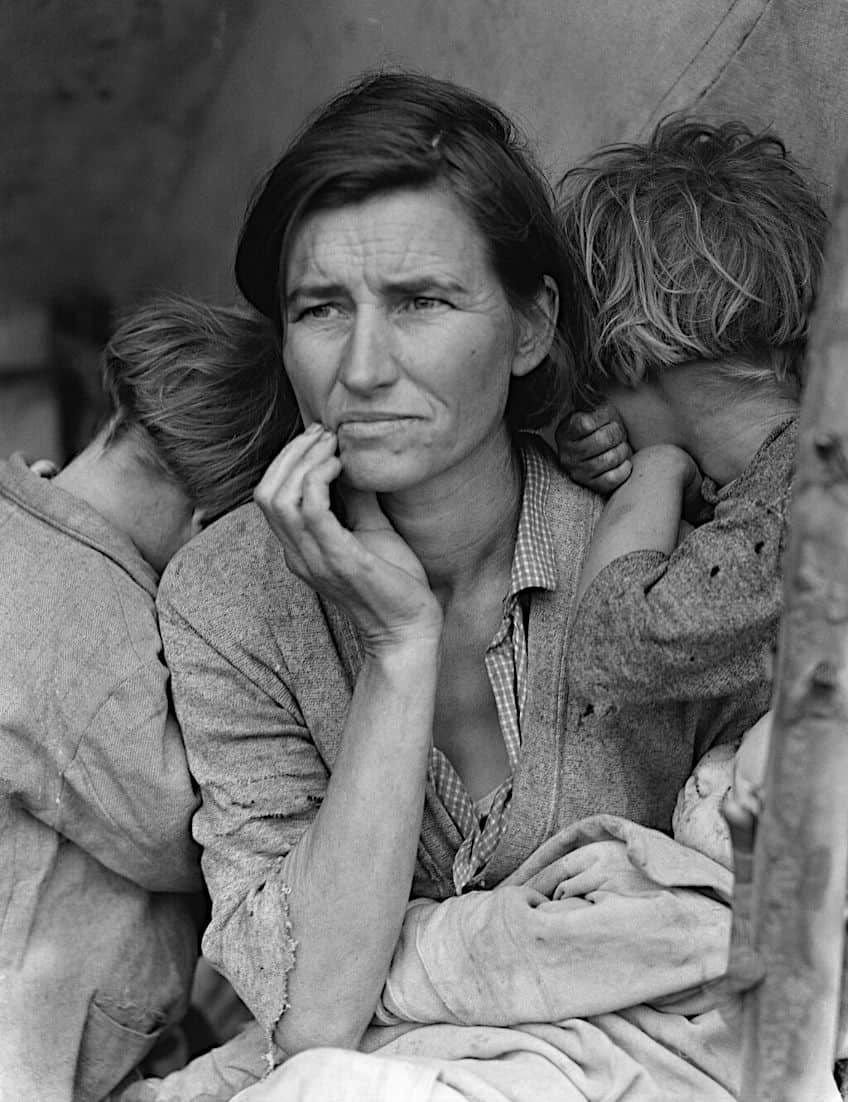
An important factor to understand about documentary photography is that it relies on Realism, a photojournalistic approach, and ethical standards that are established to protect the privacy and dignity of individuals featured in documentary images. Documentary photographs present an unbiased view of human interaction and capture reality as it unfolds. These images can include subjects such as cultural practices, historical events, social issues, and personal stories. Photojournalistic photographers focus on providing a holistic view of the subject and can include information about the context and subject alongside the images.
Documentary photographers avoid sensationalism and staged imagery.
Wedding Photography
Photographing people is a diverse arena that can also encompass the genre of photography that focuses on capturing people on their wedding day. Wedding photography is a niche form of photography that focuses on the emotions and reactions of people that revolve around and directly to the event of a wedding. These images can be shot in a staged and candid manner and feature portraits of married couples amid their ceremonies and rituals. These types of images often reflect joy, happiness, and a range of emotions that are documented to capture the union of families and the joy of a celebration.
When identifying wedding images, one can look out for details such as the wedding venue, family members, decorations, and emotional moments. Scenes featured in wedding photography include formal poses and portraits of the bride and groom, who often wear formal attire, as well as wedding rings, images of the couple’s first dance, wedding cake, bouquets, centerpieces, and perspective techniques that help with storytelling.
Professional wedding photographers shoot in high quality with accuracy in exposure and sharpness to preserve the moment.
Fitness Photography
Fitness photography is a niche form of photography that focuses on the fitness and healthy lifestyles of individuals engaged in fitness activities. This includes the photography of scenes related to strength, the musculature of the human form, physique, and a dedication to living and maintaining a healthy lifestyle. For many, fitness is a way of life and as such, the genre of fitness photography thrives in promoting the lifestyle and ideal image of a strong human being through vitality, energy, athleticism, and scenes that highlight movement.
Fitness images contain visual cues such as fitness apparel, a sense of determination as seen in facial expressions and catchy captions, as well as workout environments. Attention is drawn to the physical body to showcase an individual’s potential by employing fitness models and figures who have a sculpted physique with toned muscles or lean figures.
Fitness photography promotes the pursuit of personal goals while highlighting aspects that appeal to human emotions such as perseverance, dedication, achievement, and strength.
Fine Art Photography
In photography, variety can also be achieved through fine art photography. Fine art photography is a unique genre of photography that can encompass any aspect of nature, people, and man-made objects in diverse and innovative compositions for artistic purposes. Fine art photography is a form of visual expression that is led by a photographer’s personal vision and creative direction. Fine art images have a distinct viewpoint that is often subjective and challenges traditional visual aesthetics or concepts. These types of photos convey deeper meanings and evoke emotions and thoughts that inspire and leave viewers with more than just a visually pleasing or disturbing image.

Creative techniques such as the manipulation of color and light are used in fine art imagery as well as the creation of fine art prints that are sold as the physical artworks of the shoot. The intention behind fine art photographs is to exhibit them in an art context as opposed to commercial or documentative purposes. While there are commercial elements in the sale and promotion of art, the aim of the shoot is based on the artist’s intention, which is to turn the image into artwork.
Photographing Man-Made Products
While genres of photography like fashion photography and macro photography can feature man-made products, other types of photography focus solely on the intention of marketing manufactures products and objects.
Artistic man-made photography is also realized in the visual arts through genres like still-life photography, which we will dive into below.
Still-Life Photography
Still-life photography is the photography of inanimate objects and items that are arranged in unique and visually stimulating ways to convey symbolic messages and themes. Still-life photographs include images of flowers, fruits, musical instruments, silverware, and other items from daily life that are curated in a variety of ways to draw attention to the visual pleasures of the image such as variations in texture, colors, and contrast.
Some of the ways that one can identify a still-life image are by looking out for elements of object arrangement that imply that the objects have been arranged intentionally and the composition exhibits a sense of balance or symmetry. Still-life photographs also include background props that add context to the object and are focused on artistic expression. Controlled forms of lighting are also used in still-life photographs to emphasize the mood of the composition and draw attention to shadows, textures, and forms.
The purpose of still-life photography is to highlight the beauty of mundane and everyday man-made objects while also exploring themes of vanity, pleasure, death, luxury, wealth, and the fleeting nature of life.
Product Photography
Product photography is a genre of photography that focuses on individual products and the marketing of such man-made goods in a visually appealing way. Product photography includes the photography of items such as jewelry, electronics, consumer goods, and clothing, and is executed in a controlled studio setting with a variety of props, backgrounds, and post-processing methods. Product photography is often highly curated to appeal to a specific target audience and enhance the visual qualities of the product.
There are a few factors to examine when identifying a product photograph. These include a clear focus on the product with an image that focuses on capturing the details, textures, and features in sharp focus. Product photographs also make use of minimalistic backgrounds to present the product in an uncluttered and neutral setting to avoid distracting from the product and its branding. Product photographers also pay special attention to product placement, styling, and lighting, all of which play a crucial role in product photography. Tools such as soft boxes, diffusers, and other controlled lighting methods are employed to achieve balanced lighting and reduce the appearance of harsh shadows. Product placement is also essential to showcasing the product’s best features and establishing the desired atmosphere. One can also look for labels, logos, and other packaging designs that are used to highlight the brand’s identity.
It is important to remember that most product photography is often intended for commercial purposes in advertising or e-commerce industries.
Industrial Photography
Industrial photography is another form of photography that involves creating imagery of machinery, manufacturing processes, factories, industrial environments, and construction sites. Industrial photographers focus on the documentation and visual communication of the equipment, environment, and processes associated with industries. Some of the ways that one can identify an industrial photograph are to look out for imagery that highlights tools, machinery, and technologies used in industrial processes. Industrial photography also includes the presence of humans as workers or laborers in industrial contexts.
Industrial imagery can include close-up features of gears, equipment, machinery, technical details, control panels, and other industrial components that allude to specific industries and tools. Industrial photographers also focus on industrial processes and work to capture the operations involved in an industrial environment. Other features found in industrial photographs include assembly lines, the process of manufacturing, the transportation of goods, processes such as welding, power plant activities, and humans wearing safety gear while working with machinery. Most industrial photographs have a utilitarian aesthetic that focuses on the functionality of man-made structural objects and equipment.
These images tend to have strong geometric shapes, and harsh lines, and emphasize the form and structure of the environment.
Architectural Photography
The art of photographing architectural spaces is known as architectural photography and involves the photography of forms, and designs, and capturing the functionality of buildings and structures. These images include interior and exterior views of commercial spaces, buildings, residential properties, urban landscapes, and historical landmarks. Architectural photography focuses on structures and buildings as well as architectural elements that emphasize a structure’s three-dimensional quality and demonstrates the interplay of light and shadow.
Aspects that enable one to identify an architectural photograph are by looking for an emphasis on design and composition, which can be spotted by an image’s strong sense of pattern, balance, symmetry, and line. Photographers who specialize in architectural photography utilize different framing techniques to capture their architectural subjects in a visually striking way. Architectural photographers also make use of light and shadow in an artistic way to emphasize architectural features. Such aesthetics include dramatic lighting, silhouettes, and other ways of altering the light to highlight the way that the building surface interacts with the natural light. Other features in architectural photography include windows, doors, interior spaces, ornamental details, and a showcase of the craftsmanship of design on the structure.
The main purpose of architectural photography is to capture the essence of architectural space and identify the surrounding landscape that forms a part of the architectural space. Architectural images are significant for historicization and cultural belonging.
Advertising Photography
Similar to the function of product photography, advertising photography is a broader genre of man-made object photography that promotes the sale of products, services, or brands to the public. In advertising photography, photographers promote products in visually appealing and enticing ways to draw customers in. This is achieved by the use of various photographic techniques and staged compositions.
Ways that one can identify an advertising photograph depiction of a desired lifestyle associated with the product or brand. Advertising photographs can also promote or sell a specific item in a variety of ways to communicate an intended message concisely. Look for visual cues such as symbols, slogans, and texts, which can form part of its concept. Advertising photographs also convey a sense of brand identity through branding elements to establish brand recognition. These feature brand colors, taglines, and logos to create a connection between the image and the brand and reinforce recall. One can also look out for a call to action that encourages viewers to purchase the product or take a specific action.
Advertising photographers pay special attention to creating visually pleasing color palettes and balanced compositions by strategically using controlled lighting, relevant props, creative backgrounds, and other forms of styling to enhance the visual impact of a product.
Food Photography
Food photography is similar to advertising photography in that it aims to draw attention to food products in a visually appealing manner. Food Photography focuses on the photography of food and beverages for culinary purposes. These include images of food preparation scenes, ingredients, and dishes styled in an appetizing manner. A few visual cues that one can look out for when identifying food photography is by looking for images where food is the central focus of the image.
Food photographers photograph images of food in appealing and appetizing ways while using strategic compositions with detailed color arrangements to make the food look enticing. Visual elements such as props, backgrounds, food garnishes, and special attention to the texture of food and color are used by food photographers to create a specific ambiance. One can also look out for specific contextual elements that enhance the storytelling aspect of food photography. These include elements such as dining tables, a restaurant context, or a specific culinary theme, which adds depth to the visual narrative.
These top 20 types of photography showcase the diversity of the camera as a tool for advocation, awareness, documentation, and creative practices, which inform some parts of our daily lifestyles. Many can appreciate the conceptual thinking, planning, and technical execution behind these photography styles that enhance our visual experience of the world and each other.
Frequently Asked Questions
What Is a Photography Style?
Photographers utilize different approaches to their image production process and this is known as a photography style. The photography style is a specific set of visual techniques and characteristics set by the photographer, and includes post-processing techniques to relay a cohesive visual expression and establish their identity.
What Are the Most Popular Types of Photography?
The most famous genres of photography include fine art photography, wedding photography, photojournalism, fashion photography, landscape photography, architectural photography, and documentary photography.
Which Is the Most Profitable Genre of Photography?
Among the most highly-paid genres of photography include event, wedding, commercial, and fashion photography, with fashion photography being the most in-demand type of photography.
Jordan Anthony is a Cape Town-based film photographer, curator, and arts writer. She holds a Bachelor of Art in Fine Arts from the University of the Witwatersrand, Johannesburg, where she explored themes like healing, identity, dreams, and intuitive creation in her Contemporary art practice. Jordan has collaborated with various local art institutions, including the KZNSA Gallery in Durban, the Turbine Art Fair, and the Wits Art Museum. Her photography focuses on abstract color manipulations, portraiture, candid shots, and urban landscapes. She’s intrigued by philosophy, memory, and esotericism, drawing inspiration from Surrealism, Fluxus, and ancient civilizations, as well as childhood influences and found objects. Jordan is working for artfilemagazine since 2022 and writes blog posts about art history and photography.
Learn more about Jordan Anthony and about us.
Cite this Article
Jordan, Anthony, “Types of Photography – Unique Ways to Capture the World.” artfilemagazine – Your Online Art Source. August 2, 2023. URL: https://artfilemagazine.com/types-of-photography/
Anthony, J. (2023, 2 August). Types of Photography – Unique Ways to Capture the World. artfilemagazine – Your Online Art Source. https://artfilemagazine.com/types-of-photography/
Anthony, Jordan. “Types of Photography – Unique Ways to Capture the World.” artfilemagazine – Your Online Art Source, August 2, 2023. https://artfilemagazine.com/types-of-photography/.



